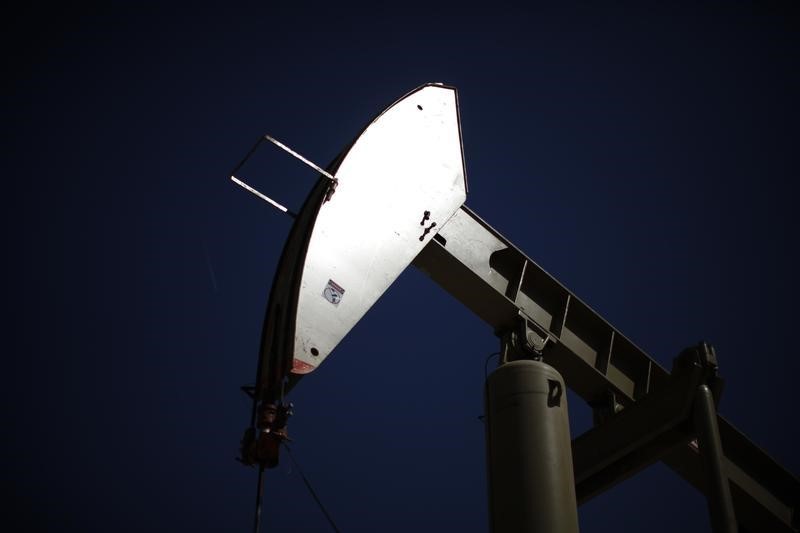Sept 28 (Reuters) - U.S. energy companies cut oil rigs for a second consecutive week as new drilling stalled in the third quarter with the fewest additions in a quarter since 2017 due to pipeline constraints in the nation's largest oil field.
Drillers cut three oil rigs in the week to Sept. 28, bringing the total count down to 863, General Electric (NYSE:GE) Co's GE.N Baker Hughes energy services firm said in its closely followed report on Friday. RIG-OL-USA-BHI
For the third quarter, the increase of five oil rigs was the smallest since drillers cut three rigs in the fourth quarter of 2017. They added 50 rigs in the first quarter and 61 rigs in the second quarter of 2018.
For the month of September, meanwhile, the oil rig count was up one, the same rise as in August.
The U.S. rig count, an early indicator of future output, is higher than a year ago when 750 rigs were active as energy companies have been ramping up production in anticipation of higher prices in 2018 than previous years.
The rig count has held mostly steady since June as spot crude prices in the Permian region in western Texas and eastern New Mexico WTM- WTC-WTM have collapsed due to a lack of pipeline infrastructure needed to transport more fuel out of the region. at the Permian, the biggest shale oil formation in the United States, is forecast to rise at its slowest pace in two years to 3.5 million barrels per day (bpd) in October, just below output from Iran, OPEC's third largest producer. U.S. oil production rose to a record high 11.0 million bpd in July, according to federal data, rivaling output from top producers Russia and Saudi Arabia. crude futures CLc1 were trading near $74 per barrel on Friday, putting the contract on track to rise for a third week in a row as U.S. sanctions on Iran tighten global oil supplies. The contract is on track to rise almost 5 percent this month but down more than 1 percent for the quarter. O/R
So far this year, U.S. oil futures have averaged $66.79 per barrel. That compares with averages of $50.85 in calendar 2017 and $43.47 in 2016.
Looking ahead, crude futures were trading over $73 for the balance of 2018 CLBALst and near $72 for calendar 2019 CLYstc1 .
In anticipation of higher prices in 2018 and 2019 than last year, U.S. financial services firm Cowen & Co this week said the exploration and production (E&P) companies it tracks have provided guidance indicating an 18 percent increase this year in planned capital spending.
Cowen said the E&Ps it tracks expect to spend a total of $85.3 billion in 2018. That compares with projected spending of $72.2 billion in 2017.
Analysts at Simmons & Co, energy specialists at U.S. investment bank Piper Jaffray, this week forecast the average combined oil and natural gas rig count would rise from 876 in 2017 to 1,031 in 2018, 1,092 in 2019 and 1,227 in 2020.
Since 1,054 oil and gas rigs were already in service, drillers would only have to add a handful of rigs during the rest of the year to hit Simmons' forecast for 2018.
So far this year, the total number of oil and gas rigs active in the United States has averaged 1,019. That keeps the total count for 2018 on track to be the highest since 2014, which averaged 1,862 rigs. Most rigs produce both oil and gas.
<^^^^^^^^^^^^^^^^^^^^^^^^^^^^^^^^^^^^^^^^^^^^^^^^^^^^^^^^^^^ Graphic on U.S. rig counts
http://graphics.thomsonreuters.com/15/rigcount/index.html U.S./Canada natural gas rig count versus Henry Hub futures price
http://tmsnrt.rs/2eT9k44 Shale oil breakevens
http://tmsnrt.rs/2fO4b17
^^^^^^^^^^^^^^^^^^^^^^^^^^^^^^^^^^^^^^^^^^^^^^^^^^^^^^^^^^^>
